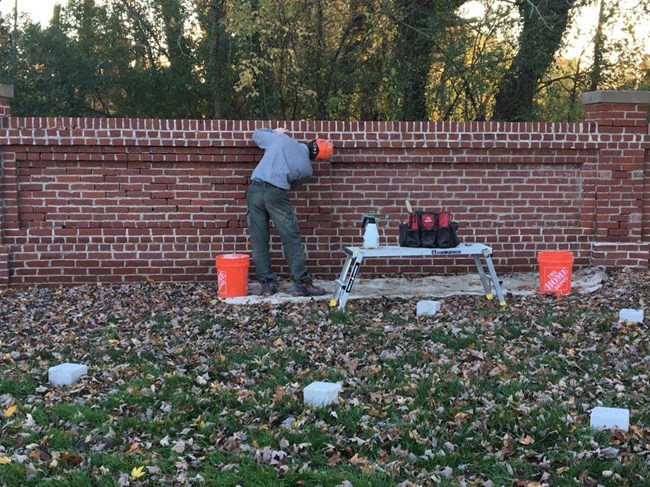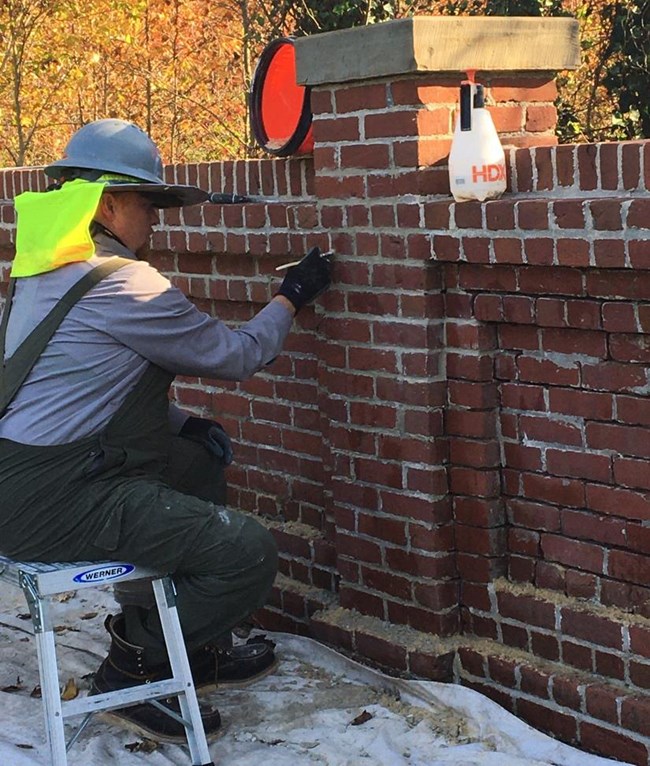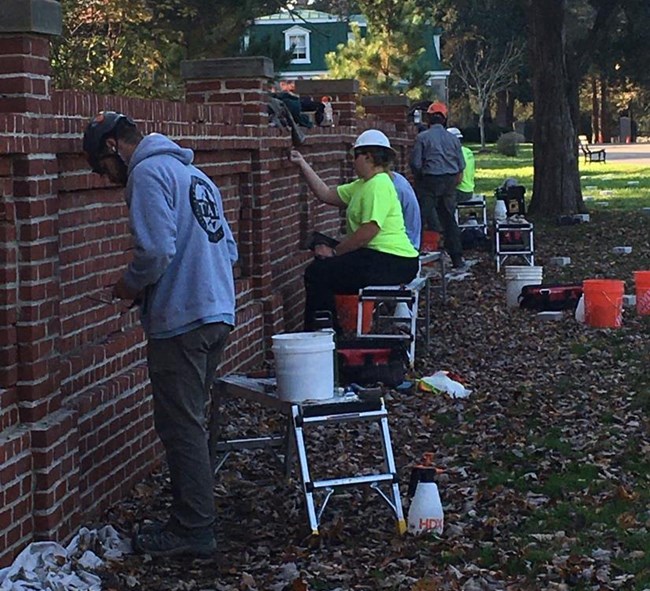Last updated: June 11, 2024
Article
Preservation of Historic Walls of Poplar Grove National Cemetery at Petersburg National Battlefield Supported by GAOA Funding

Background
National Park Service (NPS) masons from the Historic Preservation Training Center repaired, rehabilitated, and stabilized 30 double wythe masonry recessed wall sections at Poplar Grove National Cemetery at Petersburg National Battlefield. The $197,000 project was funded by the Great American Outdoors Act.
Poplar Grove National Cemetery reflects the tragedy that befell the United States during the Civil War. Each simple headstone is a poignant reminder of the human cost of war.
During the nine-month Petersburg campaign in 1864-65, most Union soldiers who died or were killed in battle were hastily buried near where the fighting took place, some in single shallow pits, others in mass graves. In 1866, a survey of the Petersburg area to locate land for a National Cemetery led to a farm just south of the city. The tract of land had been the campground for the 50th New York Volunteer Engineers. During the war they constructed a gothic-style, pine log church called Poplar Grove.
Once the cemetery was established, work started to provide a proper burial for thousands of Union soldiers who were in nearly 100 separate burial sites around Petersburg. About 100 men encompassed the "burial corps." With 10 army wagons, 40 mules, and 12 saddle horses, the men started their search and recovery mission. The burial corps worked for three years until 1869. In that time, they reinterred 6,718 remains of which only 2,139 bodies were positively identified.
The War Department managed the Poplar Grove Cemetery until August 10, 1933, at which time responsibility was turned over to the National Park Service. It is one of 14 National Cemeteries NPS manages.
Project at a Glance
Masons from the Historic Preservation Training Center repaired, rehabilitated, and stabilized 30 double wythe masonry recessed panel/wall sections at Poplar Grove National Cemetery at Petersburg National Battlefield. The masons were also joined by Historic Stewards members brought in through Conservation Legacy.

Preservation Work
The brick cemetery wall had various failed and deteriorated mortar joints and areas of brickwork, mostly in 75 interior recessed panel areas. A crew of NPS masons traveled to Petersburg National Battlefield to work on the walls.
To start, the crews cleaned the walls using a special solution then used nylon brushes to gently scrub the surface, removing dirt and pollution that had accumulated on the walls in the more than 150 years since they were built.
Next, the crews assessed the bricks that were loose in their bedding mortar. If the bricks were in good condition, they were re-laid. If the bricks were too deteriorated to be reused, they were replaced with in-kind bricks.
The crews then prepped the walls for repointing by removing any loose and deteriorate mortar using hand tools, including hammers and chisels. To repoint the joints, crews used natural hydraulic lime and local sand. Then the masons finished the surface of the mortar so it matched the historic mortar joints.
In total, 1,100 linear feet of wall was repointed during this project!

Project Purpose and Goals.
The masonry team:
- Clean brick walls with a special solution and nylon brushes
- Remove loose bricks and re-laid bricks that were in good condition
- Replace deteriorated bricks
- Repoint and finish joints to match the historic mortar joints
What are the benefits:
Poplar Grove National Cemetery is closed for burials; however, visitors are invited to walk the grounds open daily in order to pay their respects. This restoration work helps to preserve this hallowed ground and honor those laid to rest within its walls.
